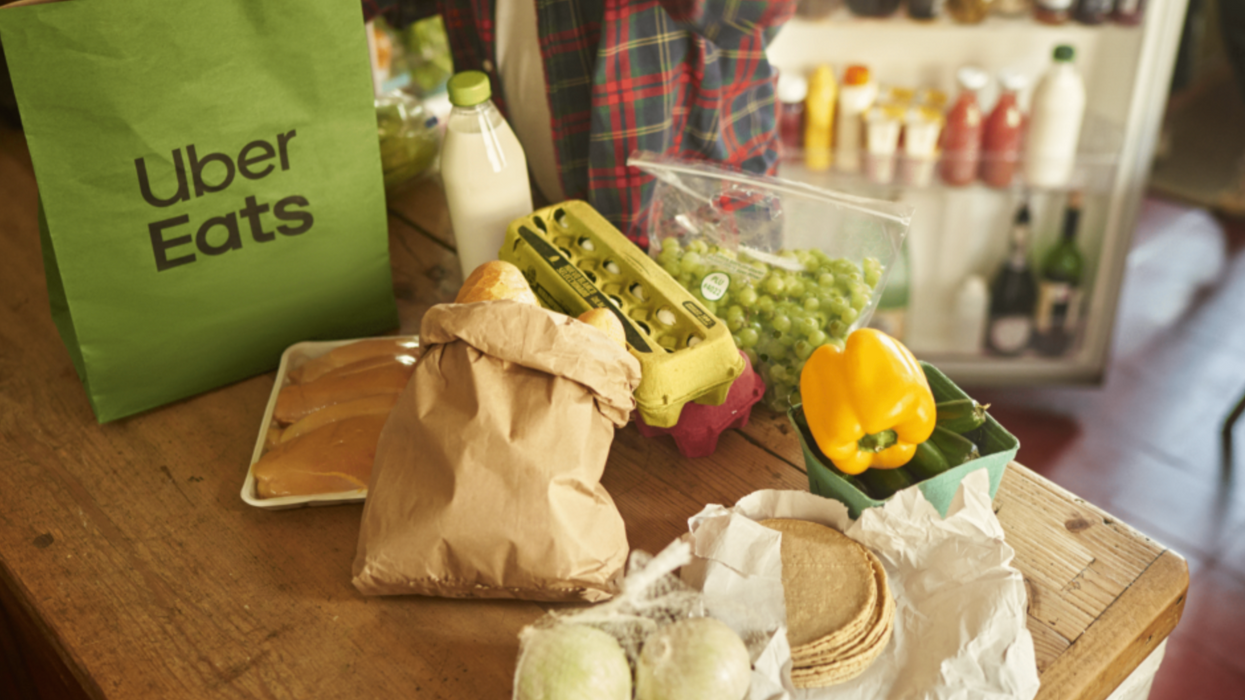Retail Channels
18 May 2023
Uber Eats is making delivery more social
The app added group grocery ordering and video gift messaging.

Uber Eats items. (Courtesy image)
The app added group grocery ordering and video gift messaging.

Uber Eats is making enhancements that add social elements to the delivery app experience.
At Uber’s GO–GET 2023 event on May 17, the company rolled out a pair of new features that allow users to order with a group, and leave a video message with a gift.
Let’s take a quick look at what got released, and the impact:
A new feature allows users to create a group grocery order.
“Building the perfect grocery cart for delivery with your roommates, family members or vacation buddies just got even easier,” wrote Uber CEO Dara Khosrowshahi.
Users can invite participants to add items to a shared cart, set deadlines for when to add priority items and automatically split the bill (the latter can happen at “most” stores, Uber says).
This feature also allows for repeat ordering. Users can place a recurring grocery order, and remind people to add their items each week.
What’s the impact? The feature appears designed to create stickiness on Uber Eats. Group ordering encourages users to form their own mutually-reinforcing circle that will encourage each other to make sales. It also enables them to schedule orders ahead so they don’t miss them.
Users can already gift a delivery on Uber Eats. Now, they can include a one-of-a-kind video message to accompany it.
This capability will initially be available for gift cards. Soon, it will be available for any item “from a bouquet of flowers and a box of chocolates to your favorite tikka masala,” Khosrowshahi said.
What’s the impact? This encourages users not only to buy for themselves, but also others. It adds a personal touch to the experience on Uber Eats. When buying a gift, people want to send an item that feels like it is from them, not just sent through a computer. A personal video will go a long way toward meeting that impulse.
In the end, Uber is aiming to create a more communal experience on its delivery app. This could help to create a network effect where users are encouraging others to join through the actions they take to include others in their shopping experience. The new features could give users more reason to join Uber Eats, and keep ordering.
Campbell Soup Company CEO Mark Clouse offered thoughts on messaging amid inflationary shifts in consumer behavior.
After months of elevated inflation and interest rate hikes that have the potential to cool demand, consumers are showing more signs of shifting behavior.
It’s showing up in retail sales data, but there’s also evidence in the observations of the brands responsible for grocery store staples.
The latest example came this week from Campbell Soup Company. CEO Mark Clouse told analysts that the consumer continues to be “resilient” despite continued price increases on food, but found that “consumers are beginning to feel that pressure” as time goes on.
This shows up in the categories they are buying. Overall, Clouse said Campbell sees a shift toward shelf-stable items, and away from more expensive prepared foods.
There is also change in when they make purchases. People are buying more at the beginning of the month. That’s because they are stretching paychecks as long as possible.
These shifts change how the company is communicating with consumers.
Clouse said the changes in behavior are an opportunity to “focus on value within our messaging without necessarily having to chase pricing all the way down.”
“No question that it's important that we protect affordability and that we make that relevant in the categories that we're in," Clouse said. "But I also think there's a lot of ways to frame value in different ways, right?”
A meal cooked with condensed soup may be cheaper than picking up a frozen item or ordering out. Consumers just need a reminder. Even within Campbell’s own portfolio, the company can elevate brands that have more value now, even if they may not always get the limelight.
The open question is whether the shift in behavior will begin to show up in the results of the companies that have raised prices. Campbell’s overall net sales grew 5% for the quarter ended April 30, while gross profit margins held steady around 30%. But the category-level results were more uneven. U.S. soup sales declined 11%, though the company said that was owed to comparisons with the quarter when supply chains reopened a year ago and expressed confidence that the category is seeing a longer-term resurgence as more people cook at home following the pandemic. Snacks, which includes Goldfish and Pepperidge Farm, were up 12% And while net sales increased overall, the amount of products people are buying is declining. Volumes were down 7%.
These are trends happening across the grocery store. Campbell is continuing to compete. It is leading with iconic brands, and a host of different ways to consume them. It is following that up with innovation that makes the products stand out. Then, it is driving home messaging that shows consumers how to fit the products into their lives, and even their tightening spending plans.
Campbell Soup is more than 150 years old, and has seen plenty of difficult economic environments. It is also a different business today, and will continue to evolve. At the end of the day, continued execution is what’s required.
“If it's good food, people are going to buy it, especially if it's a great value,” Clouse said.